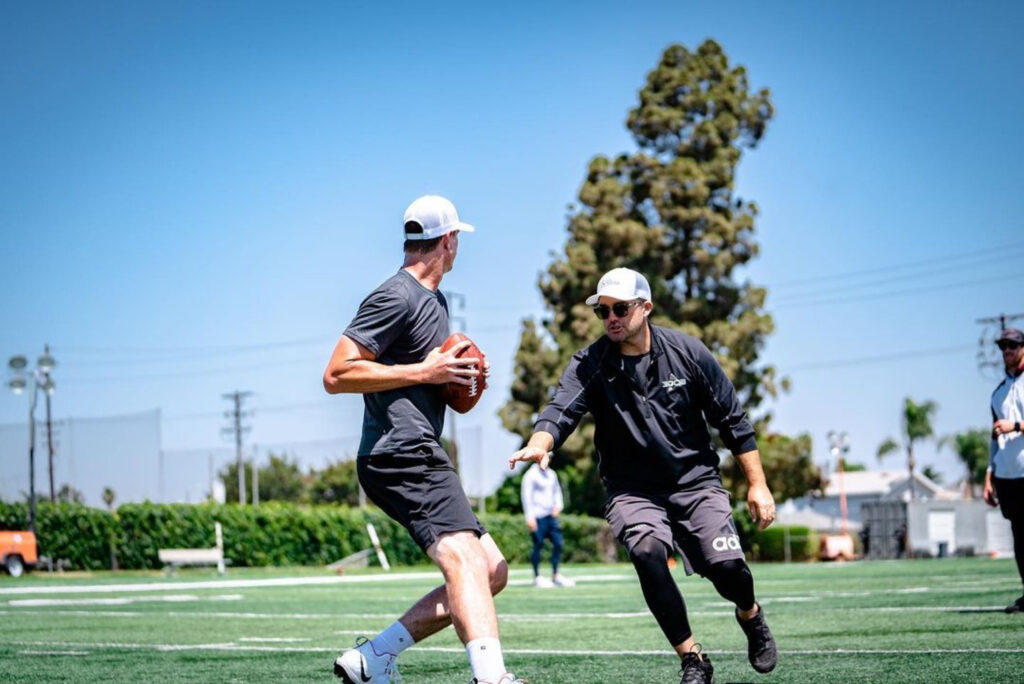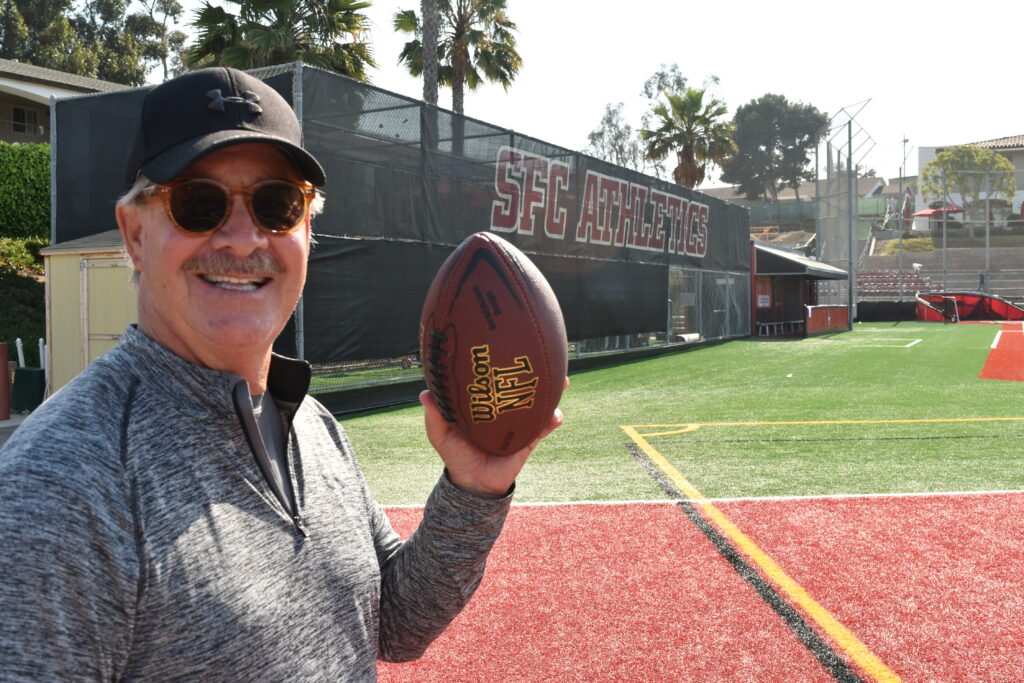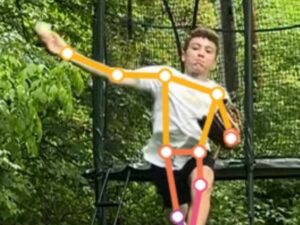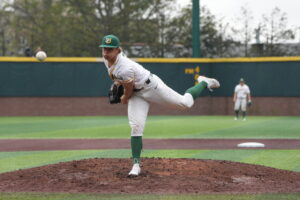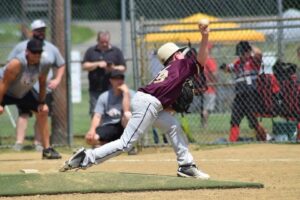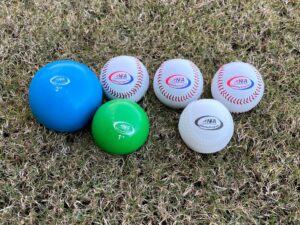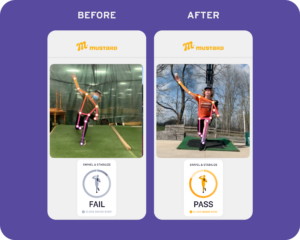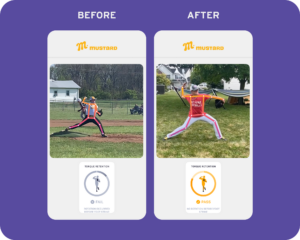By Adam Dedeaux with Lindsay Berra
Throwing starts with the feet. Anyone who coaches quarterbacks would say that the quarterback position is played from the ground up, and that footwork for quarterbacks is critical. Most quarterback coaches would also tell you that every quarterback, from Pop Warner to the NFL, needs to get rid of the ball more quickly. Because in football, timing is everything. There is a set window in which every play must be completed, so the quarterback gets the ball to his or her receivers while they’re open. If the quarterback is too slow, the window closes. But getting rid of the ball more quickly doesn’t mean throwing it harder. It means getting it out of your hands more quickly. And you can’t do that without being quick, efficient and balanced with your feet.
Drops, Explained
For all the football parents who have never actually played football, a drop is a designated number of steps taken by a quarterback on a passing play to ensure the timing of the play works with the routes the receivers are running and how the offensive line is blocking. A one-step drop is typically used in the shotgun formation, when the quarterback needs to get the ball to a receiver or running back as quickly as possible. Three-step drops are typically used for quick-game plays from under center, or as quick-game footwork in the shotgun, when the receivers are running short routes. Five-step drops are for deeper routes, and seven-step drops are reserved for long passes down-field and require a lot of protection from a strong offensive line. Because the length of the drop is so critical to the overall play, a quarterback’s footwork will usually come from the coach, based on the concept the team is running. Often, it will be very specific; you’re going to take a five-step drop from under center, and you’re going to read the play from here to here to here. However, there are cases in which a coach might tell a quarterback to do whatever makes him or her feel most comfortable.
Add a Hitch to Generate Power
A hitch, or a slide step, can be used at the top of three, five and seven-step drops to help quarterbacks generate power. This is especially important for young athletes who are too small to throw from the plant. Many bigger, stronger athletes can simply plant their back foot at the top of their drop and throw from that position, but younger kids often need a small shuffle step to gather themselves. Learning to hitch efficiently will give young athletes the best chance of being able to drive the ball down the field. Fortunately, this is something that’s easy to work on in the backyard. Kids can practice taking a three-step drop and throwing shorter passes with the back foot planted, and they can try a three-step drop with a hitch for longer passes. Focus on maintaining balance and keeping an athletic base. If you step too far with your hitch, or if you bring your feet too close together, you won’t be in a good position to throw. Being balanced overall also helps to keep throwing mechanics solid and prevents quarterbacks from throwing with just their arms.
Drop Tempo is Critical
Whether it’s a three, five or seven-step drop, the tempo—or rhythm—of the drop needs to be controlled, so you’re not getting out of control at the top when you need to be balanced and prepared to throw. As quarterbacks, we need to keep our feet underneath us, or stay in our base, or maintain an athletic stance; whatever words work for you. If your feet are not in control, or are way outside the width of your body, your chances of throwing efficiently go down dramatically.
If you’re under center, the drop is about getting depth and getting away from the lineman, so there is a sense of urgency, and you might be forced to take some big steps in a hurry. But if you’re in shotgun, you already have that depth, so there shouldn’t be any big steps in your drop. They should be shorter and choppier and more underneath you, because you really only need to gain, at most, three or four yards. And those steps should be specific and directional, so you’re ready to throw to your first option at the top of your drop. When you throw from the gun, there are fewer variables to worry about than there are when you’re under center, which is why most coaches have youth quarterbacks play solely from the gun. It just puts them in a much better position to throw.
Many kids, however, move very slowly in order to maintain control. If this is the case, they just need to practice moving more quickly to get the body accustomed to going fast. I think that’s the priority; learn to move quickly, and the control will come as they get used to the speed.
Alignment is Key
It’s very important to know where your eyes need to be in whatever play concept you are running, and your footwork helps to dictate how you’re aligned and where you’re looking.
Once you determine where your number-one target is, you can align your footwork to support getting your body open and ready to throw to number one. And then if you turn that down, you progress to number two and number three. The footwork should put you in a position at the top of your drop that will set you to throw accurately and efficiently to all your options.
No matter how many steps are in your drop, the goal is to keep the game in front of you and not turn your back or your hips too far away from the play. You want the hips to stay open to the target rather than blocked off, so you can easily and efficiently throw the football. More times than not, the first step of any drop is going to be straight back. It’s the second step that determines your direction.
Step Right to Throw Left
If the play concept is starting to the right, it’s much easier for a right-handed quarterback to keep the play in front. Plays that start to the left are more difficult. So, if you’re working on the right side of the field, the second step is going to be straight back. If you’re working the left side of the field, my second step is going to be off to the right. I often tell quarterbacks, “Step right to throw left.” If you step straight back, the hips turn internally and you turn your rear end to the left side of the field, and you’ll be blocked off and unable to throw efficiently. Stepping to the right keeps the hips open to the left side.
I often see young quarterbacks take a drop and end up dramatically out of position to make a throw to the left. They’re out of control and have to yank their head all over the place to be able to throw, but proper footwork can really set you up to maintain all of the mechanical variables we look for when we throw.

